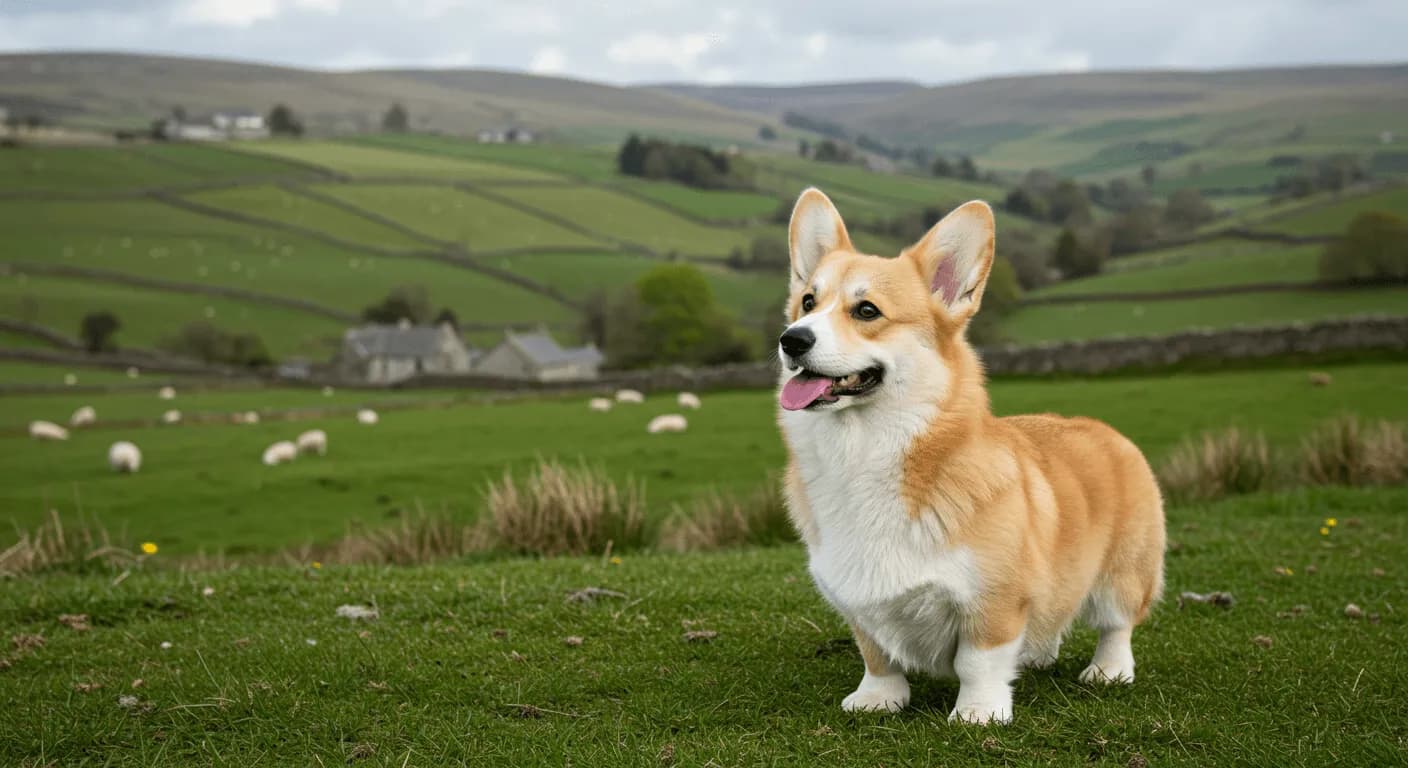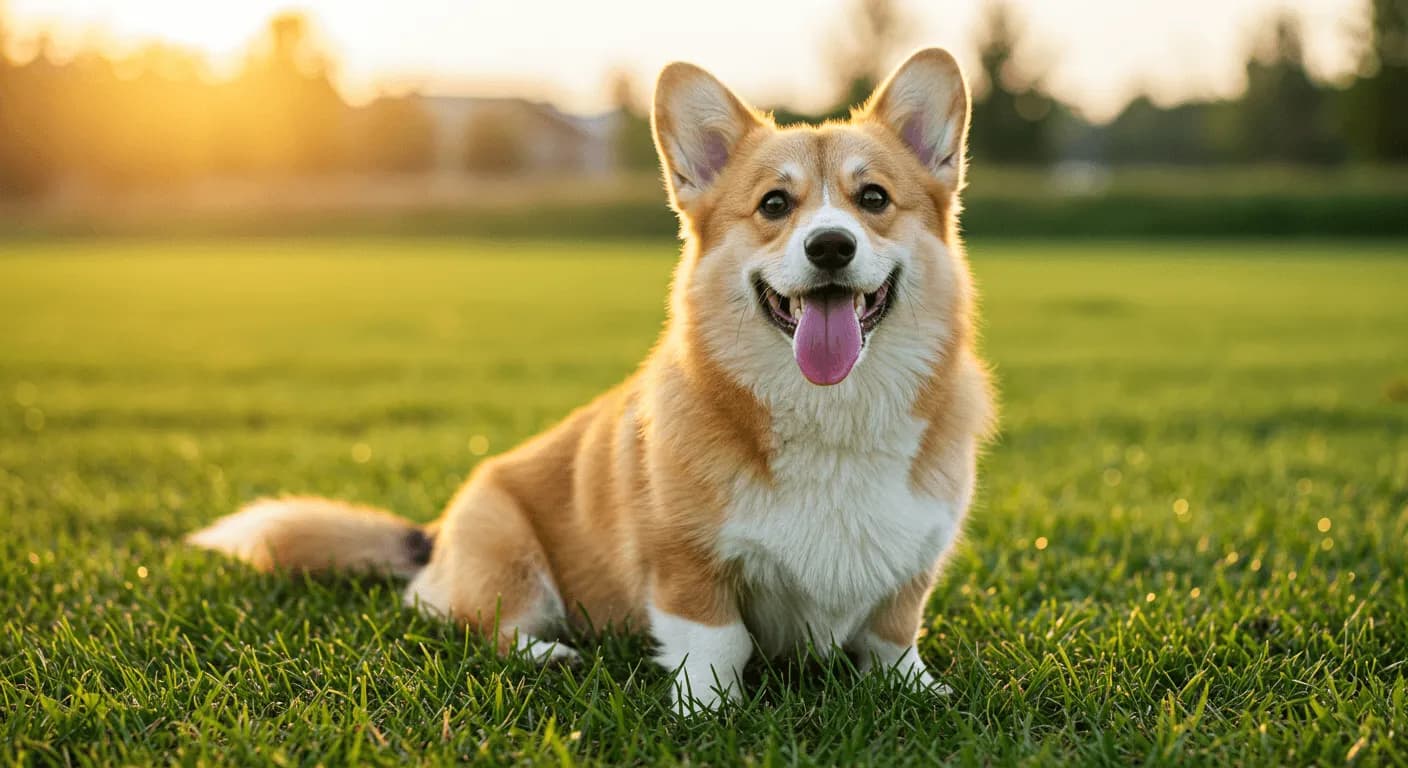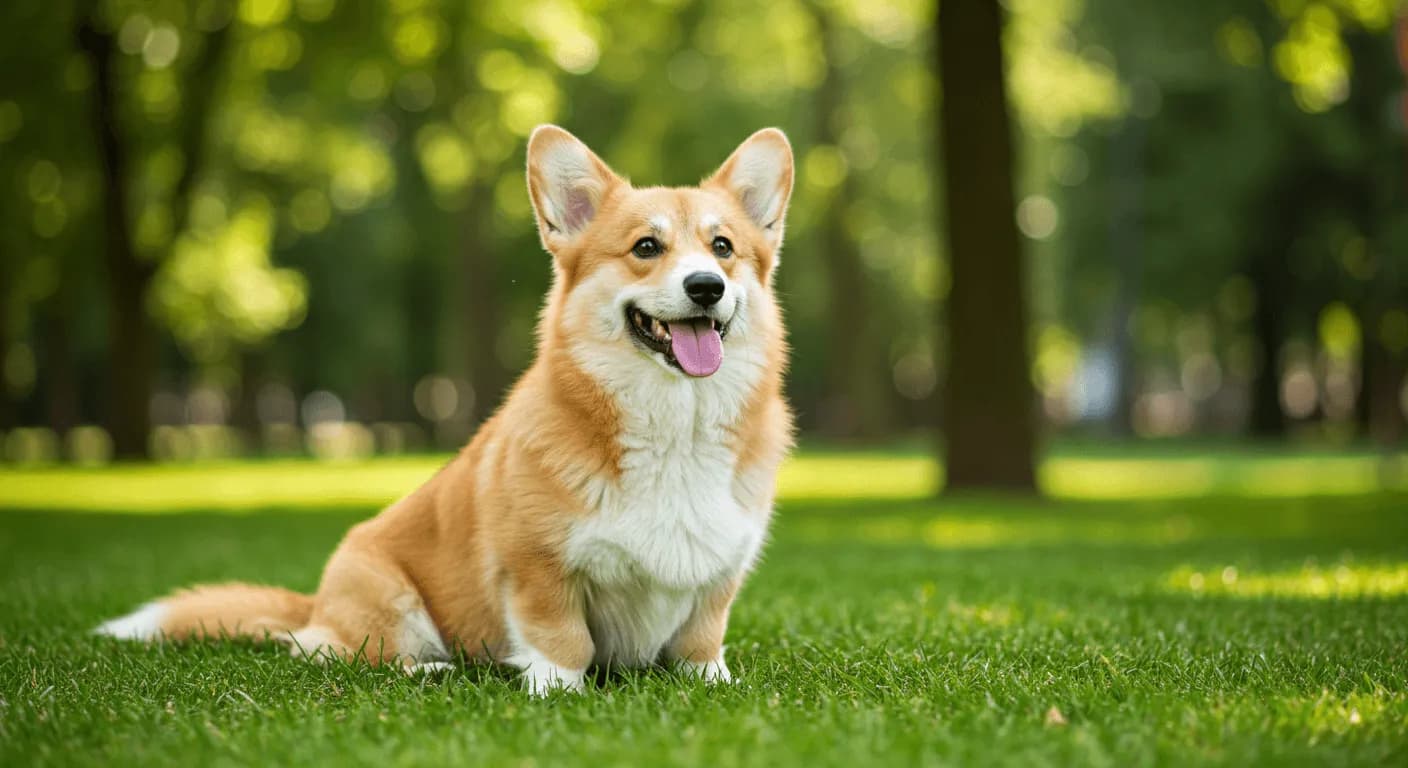The Pembroke Welsh Corgi stands as one of the world's most recognizable dog breeds, beloved for its fox-like appearance, short legs, and cheerful disposition. Beyond its charming appearance lies a rich history deeply intertwined with the rolling hills of Wales and the working farms of Pembrokeshire. These remarkable dogs have journeyed from humble beginnings as cattle herders to becoming royal favorites, most notably as the preferred companions of Queen Elizabeth II. This article delves into the fascinating origin story of the Pembroke Welsh Corgi, tracing its development through centuries of Welsh history, exploring its working heritage, and examining how this small but mighty breed came to capture hearts worldwide.
The Ancient Origins of the Pembroke Welsh Corgi
The history of the Pembroke Welsh Corgi stretches back more than a thousand years, with roots that reveal a fascinating connection to Celtic heritage and European migration patterns. Archaeological evidence and historical records suggest that the ancestors of today's Pembroke Welsh Corgis arrived in Wales around 1000 CE, though the exact timeline remains a subject of ongoing research among canine historians.
Celtic Connections and Viking Influence
The earliest known ancestors of the Pembroke Welsh Corgi are believed to have arrived in Wales with Flemish weavers who settled in the southwestern region of Pembrokeshire at the invitation of King Henry I. These skilled craftsmen brought with them small herding dogs that would eventually develop into the breed we recognize today. Historical records indicate that similar spitz-type dogs were used throughout Northern Europe for herding, suggesting a shared ancestry with breeds like the Swedish Vallhund and the Icelandic Sheepdog.
Some breed historians point to an even earlier origin, suggesting that the ancestors of Corgis may have been present in Wales as early as the 9th or 10th century. According to Welsh folklore, the Pembroke Welsh Corgi was a "gift from the fairies," who used these small dogs to pull their carriages and ride them into battle. This enchanting tale explains the distinctive "saddle mark" pattern seen on the backs of some Pembrokes, said to be the imprint of fairy saddles.
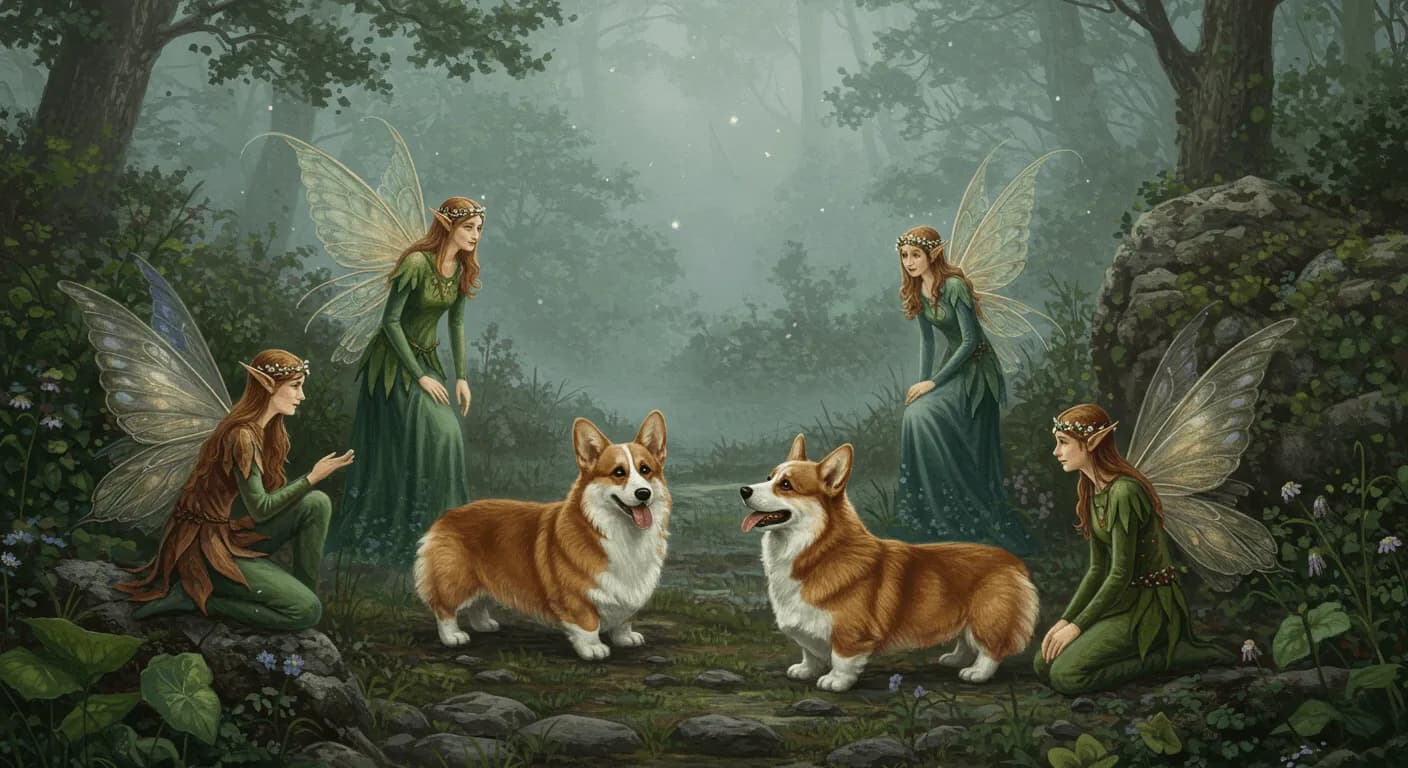
Genetic Heritage
Modern genetic studies have helped clarify some aspects of the Pembroke Welsh Corgi's lineage. DNA analysis reveals that the breed belongs to the spitz genetic family, which includes numerous Northern European working breeds characterized by their fox-like appearance, thick double coats, and pricked ears. The breed's distinctive short legs result from a genetic mutation called achondroplasia, a form of dwarfism that appeared in their bloodline centuries ago and was selectively bred for its utility in herding livestock.
The Welsh Heritage: Where Pembroke Welsh Corgis Came From
The Pembroke Welsh Corgi's development is inseparable from the landscape and culture of Wales, particularly the county of Pembrokeshire from which it derives part of its name. This southwestern coastal region of Wales, with its green pastures and rugged terrain, shaped the Corgi into the efficient working dog it became.
Pembrokeshire: The Breed's Homeland
Pembrokeshire, with its mild maritime climate and rolling hills, provided the perfect environment for raising cattle and developing a specialized herding breed. The region's topography required versatile farm dogs that could navigate varied terrain while performing essential work around the farmstead.
The Pembroke Welsh Corgi's native landscape influenced several key physical traits:
- Short legs - Allowing the dog to duck beneath kicking cattle
- Weather-resistant double coat - Protection against the often wet Welsh climate
- Athletic build - Enabling quick movements needed for herding
- Stamina and endurance - Essential for long days working the fields
The working conditions in Pembrokeshire farms demanded a dog that was not only physically capable but also intelligent and independent. Corgis needed to make decisions on their own while herding, contributing to the breed's remarkable problem-solving abilities still evident today.
Cultural Significance in Welsh Society
In Welsh rural communities, the Pembroke Welsh Corgi was far more than a pet—it was an essential working partner and valued member of the farm operation. Farmers relied heavily on these small but effective dogs to drive cattle to market, control livestock in the fields, and guard the homestead.
The importance of the Corgi in Welsh culture extended beyond its practical functions. The breed featured prominently in Welsh folklore and oral traditions, with tales of their fairy origins passed down through generations. These stories cemented the Corgi's place as a uniquely Welsh cultural symbol and highlighted the close relationship between these dogs and the people who bred them.

The Working Heritage: What Pembroke Welsh Corgis Were Bred For
When examining what Pembroke Welsh Corgis were bred for, we discover a versatile working dog with specialized adaptations for cattle herding. Their distinctive physical build—short legs, sturdy bodies, and remarkable agility—was purposefully developed to excel at controlling large livestock while avoiding injury.
Masters of Cattle Herding
The primary function of the Pembroke Welsh Corgi was to drive cattle from farmlands to markets, sometimes over considerable distances. Their herding technique was distinctive and effective:
- Using sharp, rapid barks to control cattle movement
- Nipping at the heels of livestock to direct them
- Ducking to avoid kicks from irritated cattle
- Working in partnership with farmers to move herds efficiently
- Showing remarkable stamina during long drives to market
This method of "heeling" (nipping at the heels of cattle) gave rise to the nickname "heelers" and required a specific set of physical attributes. The Corgi's low-set body allowed it to avoid kicks that would seriously injure taller dogs, while its surprising speed and agility enabled quick dodges when necessary.
Beyond Herding: The Multi-Purpose Farm Dog
While cattle herding was their primary role, Pembroke Welsh Corgis served multiple purposes on Welsh farms:
- Vermin control - keeping rats and mice populations in check
- Guardian duties - alerting to strangers or predators approaching the farm
- Droving assistance - helping move various livestock to market
- Companion animals - providing comfort and company to farm families
This versatility made the Corgi extraordinarily valuable to Welsh farmers with limited resources, who needed each animal on the farm to earn its keep in multiple ways. The economic importance of these dogs cannot be overstated—a good Corgi could effectively do the work of several men when it came to managing livestock.
Evolution of Working Purpose
As agricultural practices modernized through the 19th and 20th centuries, the Pembroke Welsh Corgi's role began to shift. While some continued their traditional herding work, others found new purposes. Their intelligence and trainability made them excellent candidates for early dog sports and competitions, while their affectionate nature made them increasingly popular as companions.
By the early 20th century, formalized breeding programs had begun to standardize the Pembroke Welsh Corgi's appearance and temperament. This period marked the transition from purely working stock to the dual-purpose dogs we know today—capable of performing traditional tasks but also well-suited to family life.
Distinguishing Features: The Pembroke and Cardigan Divide
The history of Welsh Corgis includes an important distinction between two separate but related breeds: the Pembroke Welsh Corgi and the Cardigan Welsh Corgi. Though similar in many respects, these two breeds developed in relative isolation from each other, resulting in distinct physical and temperamental differences that became formally recognized in the early 20th century.
The geographical separation between Pembrokeshire and Cardiganshire (now Ceredigion) in Wales contributed to the development of these separate breeds, despite their shared working heritage. The main differences include:
- Tail: Pembrokes traditionally have docked tails or natural bobtails, while Cardigans have long fox-like tails
- Ears: Pembroke ears tend to be more pointed, while Cardigan ears are more rounded
- Body shape: Pembrokes are generally shorter in body and more rectangular, while Cardigans are longer with more pronounced curves
- Size: Cardigans are typically slightly larger and heavier than Pembrokes
- Coat colors: While both come in various colors, certain patterns are more common in one breed than the other
For centuries, farmers bred these dogs based on working ability rather than appearance, resulting in some variation within each type. However, when dog shows became popular in the late 19th century, efforts to standardize and distinguish the two types accelerated.
The Kennel Club in the UK initially recognized both types as a single breed in 1925, but by 1934, the Pembroke and Cardigan Welsh Corgis were officially designated as separate breeds. This formal distinction helped preserve the unique characteristics of each type while acknowledging their shared heritage as Welsh herding dogs.
The Royal Connection: Pembroke Welsh Corgis and the British Monarchy
Perhaps no single factor has done more to popularize the Pembroke Welsh Corgi worldwide than its association with the British royal family, particularly Queen Elizabeth II. This connection transformed a relatively obscure Welsh herding dog into one of the most recognizable breeds globally and secured its place in popular culture.
How the Pembroke Came to the Palace
The royal connection began in 1933 when King George VI (then Duke of York) acquired a Pembroke Welsh Corgi named Dookie for his daughters, Princesses Elizabeth and Margaret. Young Princess Elizabeth fell in love with the breed, beginning a lifelong affection that would eventually make the Pembroke Welsh Corgi synonymous with the British monarchy.
Over her long reign, Queen Elizabeth II owned more than 30 Pembroke Welsh Corgis, often keeping several at once. Her first personal Corgi, Susan, was given to her as an 18th birthday present in 1944, and many of the Queen's subsequent dogs were descendants of this beloved pet. The Queen's dedication to the breed extended to creating her own breeding program at Windsor Castle, focusing on maintaining the traditional qualities of the Pembroke Welsh Corgi.
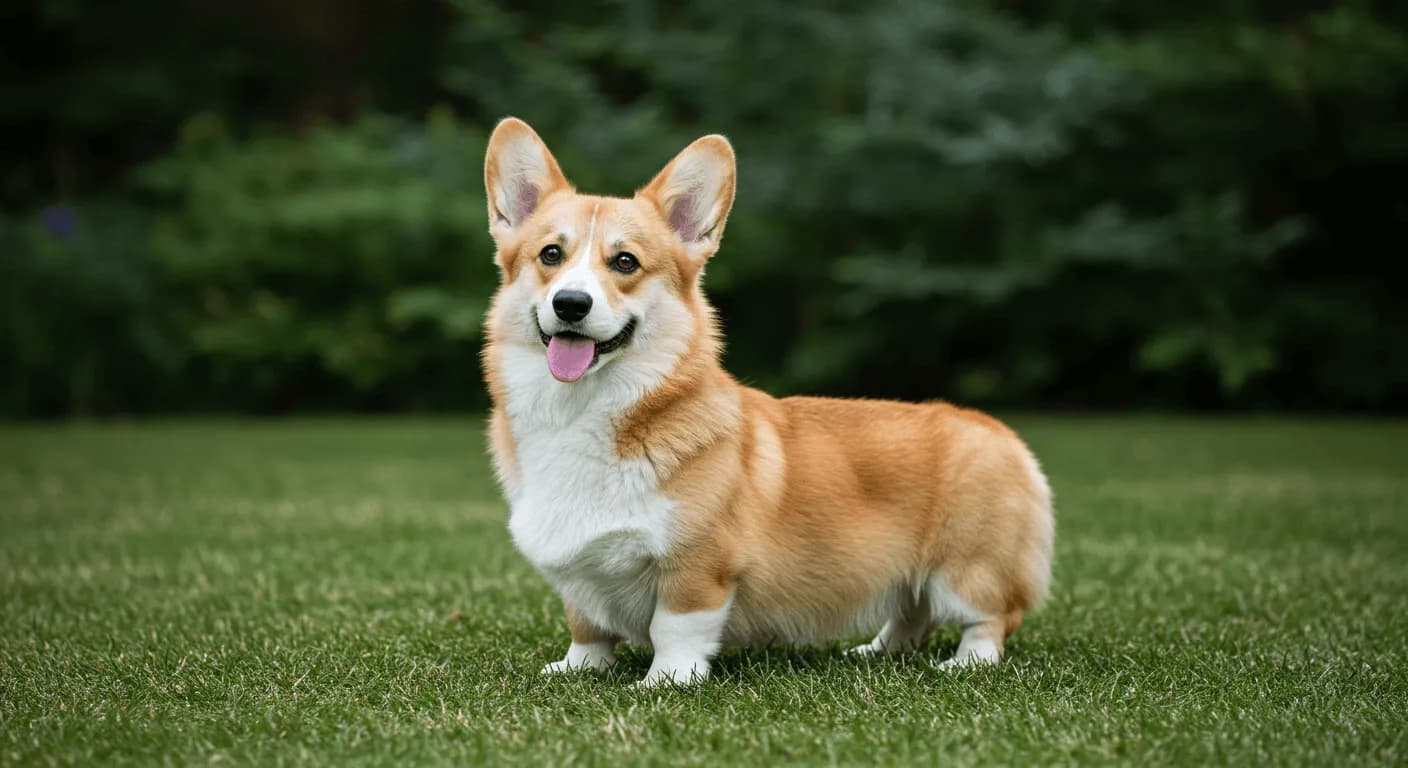
Impact on Breed Popularity
The royal association dramatically increased the Pembroke Welsh Corgi's visibility and popularity. In the UK, registrations of Pembroke puppies rose significantly following key royal events featuring the Queen's Corgis. This "royal effect" extended internationally, with the breed gaining recognition and admirers worldwide largely due to its status as "the Queen's dog."
However, this popularity came with challenges. The sudden demand sometimes led to irresponsible breeding practices, and many people acquired Corgis without understanding their herding instincts and exercise needs. Responsible breeders and Corgi enthusiasts have worked diligently to educate potential owners about the breed's true nature beyond its royal connections.
Pembroke Welsh Corgi Comes to America: Expanding Horizons
The Pembroke Welsh Corgi's journey to America represents an important chapter in the breed's history, establishing a foothold that would eventually make the United States home to one of the largest populations of Corgis outside the United Kingdom. The first documented Pembroke Welsh Corgis arrived in the United States in the early 1930s, though some historical accounts suggest individual dogs may have arrived with Welsh immigrants even earlier.
Early American Pioneers
Mrs. Lewis Roesler is credited with bringing some of the first Pembroke Welsh Corgis to America in 1931, importing them directly from Wales. These early imports laid the foundation for American breeding programs, though the breed remained relatively rare in the United States for several decades.
The American Kennel Club officially recognized the Pembroke Welsh Corgi in 1934, the same year that the Pembroke and Cardigan varieties were separated into distinct breeds by the Kennel Club in the UK. This recognition helped establish breeding standards and gave the breed legitimacy in American dog shows and breeding circles.
The growth of the breed in America followed this timeline:
- 1930s: First imports arrive and gain AKC recognition
- 1940s: Slow growth in popularity, primarily among Welsh-American communities and dog enthusiasts
- 1950s-1960s: Increased visibility due to royal connection begins to boost interest
- 1970s-1980s: Steady growth in registrations and breed clubs form across the country
- 1990s-present: Explosion in popularity, especially with the advent of social media
The American Contribution to Breed Development
American breeders have made significant contributions to the development and preservation of the Pembroke Welsh Corgi. While maintaining respect for the breed's Welsh heritage and working abilities, American breeding programs have:
- Expanded the genetic diversity of the breed
- Emphasized sound structure and movement
- Worked to reduce hereditary health conditions
- Maintained the Corgi's working instincts while adapting it to American family life
- Promoted the breed through competitions, herding trials, and other dog sports
The Pembroke Welsh Corgi Club of America, founded in 1936, has served as the national parent club for the breed in the United States, establishing a code of ethics for breeders and working to educate the public about responsible Corgi ownership.
Naming and Etymology: How the Pembroke Welsh Corgi Got Its Name
The name "Pembroke Welsh Corgi" contains rich linguistic and cultural information about the breed's origins. Each element of the name provides insight into the breed's heritage, geographic origins, and physical characteristics.
Breaking Down the Name
The name consists of three distinct parts, each with its own etymology:
- Pembroke: Refers to Pembrokeshire, the county in southwestern Wales where the breed was developed. This geographical designation distinguishes it from the Cardigan Welsh Corgi, which developed in neighboring Cardiganshire.
- Welsh: Identifies the breed's country of origin and cultural heritage within the United Kingdom. This national designation is important as it connects the breed to the specific farming traditions and landscape of Wales.
- Corgi: This is perhaps the most linguistically interesting element. The word "corgi" is derived from Welsh language elements:
- "Cor" meaning "dwarf" or "small"
- "Gi" (a mutated form of "ci") meaning "dog"
Together, these create "corgi" - literally "dwarf dog" or "small dog" - a perfect description of the breed's distinctive short-legged stature.
Historical Naming Conventions
Before the standardization of breed names in the early 20th century, Pembroke Welsh Corgis were known by various local names in Wales, including:
- Ci-llathed (yard-long dog)
- Ci Sawdl (heel-biting dog)
- Ci Sodlau (cattle dog)
- Welsh Heeler
These names reflected the breed's function rather than its appearance, highlighting its working role in Welsh farming communities. The transition to the more formal "Pembroke Welsh Corgi" came with the breed's recognition by kennel clubs and the need to distinguish it clearly from its Cardigan cousin.
It's worth noting that in Welsh language pronunciation, the emphasis is placed on the first syllable of "Corgi" (COR-gi), rather than the second syllable as is common in American English. This small detail reflects how even the pronunciation of the breed's name has evolved as it spread beyond Wales.
Breed Standards and Recognition: Formalizing the Pembroke Welsh Corgi
The transformation of the Pembroke Welsh Corgi from a working farm dog to a recognized breed with standardized characteristics represents an important chapter in its history. The process of formal recognition helped preserve the breed's distinctive traits while sometimes creating tension between working ability and conformation standards.
Early Breed Standards
The first formal breed standards for Welsh Corgis were developed in the early 20th century as dog shows gained popularity and breed clubs formed. Initially, both Pembroke and Cardigan varieties were judged as a single breed, causing considerable confusion and controversy among early breeders and judges.
A key milestone came in 1925 when both types of Welsh Corgis were officially recognized by the Kennel Club in the United Kingdom. However, the distinctions between the two varieties became increasingly apparent, leading to their separation into two distinct breeds in 1934—the Pembroke Welsh Corgi and the Cardigan Welsh Corgi.
The original Pembroke Welsh Corgi standard emphasized these key characteristics:
- Short, powerful build with low-set body
- Fox-like head with erect ears
- Straight, strong legs despite their shortness
- Level topline without excessive dipping or roaching
- Alert, intelligent expression
- Docked tail (which was traditional for working Pembrokes)
- Weather-resistant double coat
International Recognition
Following recognition in the United Kingdom, the Pembroke Welsh Corgi gained recognition from major kennel clubs worldwide:
- American Kennel Club (AKC) - 1934
- Canadian Kennel Club - 1936
- Australian National Kennel Council - 1936
- Fédération Cynologique Internationale (FCI) - 1954
Each organization maintains slightly different standards for the breed, though the core characteristics remain consistent. These standards serve as guidelines for breeders and judges in preserving the breed's essential qualities.
Evolution of Standards
Over the decades, breed standards have evolved to address certain issues:
- Health considerations have become more prominent
- Extreme features that might impede function are discouraged
- The natural bobtail has gained acceptance as tail docking became restricted in many countries
- Greater emphasis has been placed on movement and soundness
Modern breed enthusiasts continue to debate the balance between preserving working ability and meeting conformation standards. Many dedicated Pembroke Welsh Corgi breeders now focus on producing dogs that excel both in the show ring and in performance events like herding trials, agility, and obedience—honoring the breed's dual heritage as both working dog and companion.
The Pembroke Welsh Corgi in Working Roles: Traditional and Modern
Throughout its history, the Pembroke Welsh Corgi has demonstrated remarkable versatility as a working dog. From its traditional role herding cattle in the Welsh countryside to modern service and therapy work, the breed's intelligence and adaptability have allowed it to excel in numerous working contexts.
Traditional Working Methods
The traditional herding technique employed by Pembroke Welsh Corgis differs from that of many larger herding breeds. Rather than gathering livestock through eye contact and circling behaviors (as seen in Border Collies), Corgis are "heelers" who drive livestock forward by nipping at their heels and using sharp barks to control movement.
This distinctive herding style was perfectly suited to the Welsh farming context, where cattle needed to be moved efficiently through narrow lanes and fields. The Corgi's method includes:
- Moving behind the livestock rather than around them
- Using controlled nips to encourage movement
- Ducking quickly to avoid kicks
- Working in close partnership with the human handler
- Showing independent judgment about when to push and when to hold back
These traditional methods required not just physical adaptations but also specific temperament traits—courage, intelligence, and a strong work ethic—that remain hallmarks of the breed today.
The Pembroke Welsh Corgi as a Modern Working Dog
While few Pembroke Welsh Corgis still perform their traditional herding role, many have found new working niches that utilize their natural abilities:
- Herding trials and competitions - Many Corgis still demonstrate their ancestral skills in organized herding events
- Farm and ranch work - Some continue to work as all-purpose farm dogs, particularly in small livestock operations
- Service and therapy dogs - Their intelligence and sensitivity make them excellent candidates for assistance work
- Search and rescue - Their acute senses and determination have proven valuable in certain search contexts
- Canine sports - Corgis excel in agility, obedience, rally, tracking, and other performance events
The breed's working heritage manifests in everyday behaviors that surprise many owners unprepared for a small dog with a strong work ethic. Corgis often display natural herding tendencies toward children, other pets, and even household objects, demonstrating that these instincts remain deeply ingrained despite generations removed from farm work.
Organizations like the American Herding Breed Association and local Corgi clubs work to preserve these working abilities through specialized events and training opportunities, ensuring that the Pembroke Welsh Corgi's functional heritage isn't lost even as the breed primarily serves as a companion animal.
Preservation Efforts and Challenges: Maintaining Breed Integrity
The continued existence of the Pembroke Welsh Corgi as a healthy, functional breed faces both challenges and dedicated preservation efforts. Balancing popularity with responsible breeding practices represents one of the most significant challenges in maintaining the breed's distinctive qualities and genetic health.
Health Concerns and Breeding Practices
Like many purebred dogs, the Pembroke Welsh Corgi faces certain hereditary health challenges that require vigilant attention from responsible breeders:
- Hip dysplasia - A concern in many dwarf breeds that can limit mobility and cause pain
- Degenerative myelopathy - A progressive disease affecting the spinal cord
- Von Willebrand's disease - A blood clotting disorder
- Progressive retinal atrophy - A group of genetic diseases causing blindness
- Intervertebral disc disease - Back problems related to the breed's long spine and short legs
Responsible preservation breeding practices include:
- Health testing breeding stock for known genetic conditions
- Maintaining genetic diversity through thoughtful breeding decisions
- Selecting for temperament and working ability, not just appearance
- Avoiding extreme physical characteristics that might compromise health
- Educating puppy buyers about responsible ownership
The Pembroke Welsh Corgi Club of America and similar organizations worldwide have established health committees and codes of ethics to guide breeders in these efforts.
Popularity Challenges
The Pembroke Welsh Corgi has experienced several waves of popularity, most recently fueled by social media and continued royal association. This popularity presents a double-edged sword:
- Benefits: Wider gene pool, greater resources for breed research, more opportunities for education
- Challenges: Puppy mills and irresponsible breeding, acquisition by unprepared owners, breeding for fads rather than function
The internet era has brought particular challenges, with "cute" features sometimes emphasized over health and working ability. Images of extremely short-legged or unusually colored Corgis may attract attention online but often represent departures from the traditional, functional breed type.
Looking to the Future
Dedicated breed preservationists focus on several key strategies:
- Mentoring new breeders in responsible practices
- Preserving working abilities through performance events
- Educating the public about the breed's true nature and needs
- Supporting research into genetic health issues
- Maintaining breed type while avoiding extremes
These efforts represent a balance between honoring the Pembroke Welsh Corgi's heritage as a working farm dog while adapting to its primary modern role as a companion animal. The goal is to ensure that future generations can enjoy this distinctive breed with its characteristic intelligence, adaptability, and charm intact.
Cultural Impact: The Pembroke Welsh Corgi Beyond the Farm
The cultural footprint of the Pembroke Welsh Corgi extends far beyond its origins as a humble Welsh farm dog. From royal palaces to internet memes, this small breed has made an outsized impact on popular culture, becoming a recognized symbol that transcends its working origins.
Literary and Media Representations
The Pembroke Welsh Corgi has appeared in numerous books, films, and television shows, often reflecting aspects of its real-world personality and history:
- Children's books frequently feature Corgis as clever, loyal characters
- The anime series "Cowboy Bebop" features Ein, a data-enhanced Pembroke Welsh Corgi
- Numerous books have been written about the Queen's Corgis, mixing fact and fiction
- Television shows like "The Crown" have highlighted the royal Corgi connection
- Video games often include Corgi characters, capitalizing on their distinctive appearance
These representations have further cemented the breed's place in cultural consciousness, though sometimes at the cost of oversimplifying its nature and needs.
The Digital Age Corgi
Few dog breeds have benefited from the internet age as much as the Pembroke Welsh Corgi. The breed's distinctive appearance and expressive face have made it an online sensation:
- Social media accounts dedicated to Corgis attract millions of followers
- Corgi meet-ups and "Corgi Con" events draw thousands of participants
- Memes featuring Corgis have become part of internet culture
- Online communities provide support and education for Corgi owners
- The "sploot" position (where Corgis lay flat with legs extended behind them) has entered popular vocabulary
This online presence has contributed significantly to the breed's recent popularity surge, though experienced Corgi enthusiasts often worry about the potential for impulse acquisitions based solely on cute photos rather than understanding of the breed's temperament and needs.
Symbol of Welsh Heritage
In Wales itself, the Pembroke Welsh Corgi retains special significance as a cultural symbol:
- It appears in tourist materials promoting Welsh heritage
- Welsh cultural festivals often feature the breed in various capacities
- The Corgi represents a tangible connection to traditional Welsh farming life
- Breed preservation efforts receive particular support in Wales as part of cultural heritage conservation
This connection to Welsh identity remains important even as the breed has gained international recognition, serving as a reminder of the Pembroke Welsh Corgi's specific geographic and cultural origins.
The diverse roles the Pembroke Welsh Corgi plays in contemporary culture—from royal companion to internet celebrity to symbol of Welsh heritage—demonstrate its remarkable journey from specialized working dog to global icon. These cultural representations both celebrate the breed and create new responsibilities for those dedicated to its preservation and welfare.## Conclusion: The Enduring Legacy of the Pembroke Welsh Corgi
The story of the Pembroke Welsh Corgi is a remarkable journey spanning over a thousand years, from the misty hills of medieval Wales to the digital age of global connectivity. This small but mighty breed has demonstrated an extraordinary ability to adapt and thrive through changing times while maintaining its essential character and charm. As we've explored throughout this article, the Pembroke Welsh Corgi's history reveals much about the relationship between humans and dogs, and how breeds evolve to meet both practical needs and emotional desires.
The Pembroke's evolution from specialized cattle herder to beloved companion reflects broader changes in human society. As agricultural practices modernized and fewer dogs were needed for traditional farm work, the Pembroke Welsh Corgi's intelligence, adaptability, and affectionate nature allowed it to transition successfully to new roles. This adaptability has been key to the breed's survival and continued relevance.
For those considering a Pembroke Welsh Corgi as a companion, understanding this rich heritage is essential. The working instincts, intelligence, and energy that made Corgis valuable farm dogs remain present in today's pets. A Corgi that doesn't receive appropriate mental and physical stimulation may redirect its herding instincts toward household activities—nipping at heels, "herding" children, or barking to control movement. Appreciating the breed's working background helps owners provide appropriate outlets for these natural behaviors.
As we look to the future, the preservation of the authentic Pembroke Welsh Corgi presents both challenges and opportunities. Responsible breeding practices, education, and a commitment to maintaining working abilities will be crucial in ensuring that future generations can enjoy this distinctive breed. The balance between form and function, appearance and health, tradition and adaptation will continue to guide dedicated breed enthusiasts.
The enduring popularity of the Pembroke Welsh Corgi speaks to something timeless in its appeal—perhaps the combination of its distinctive appearance with its genuine capability, its noble connections with its humble origins, or simply its remarkable ability to connect with humans while remaining true to its doggy nature. Whatever the reasons, the Pembroke Welsh Corgi has secured its place not just in canine history but in human hearts worldwide, ensuring that this small dog with the big personality will continue to charm and inspire for generations to come.

